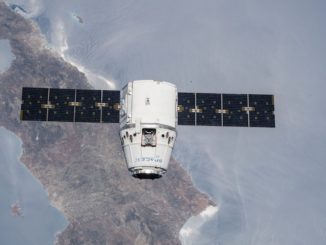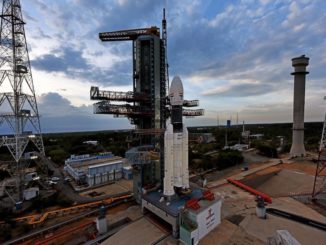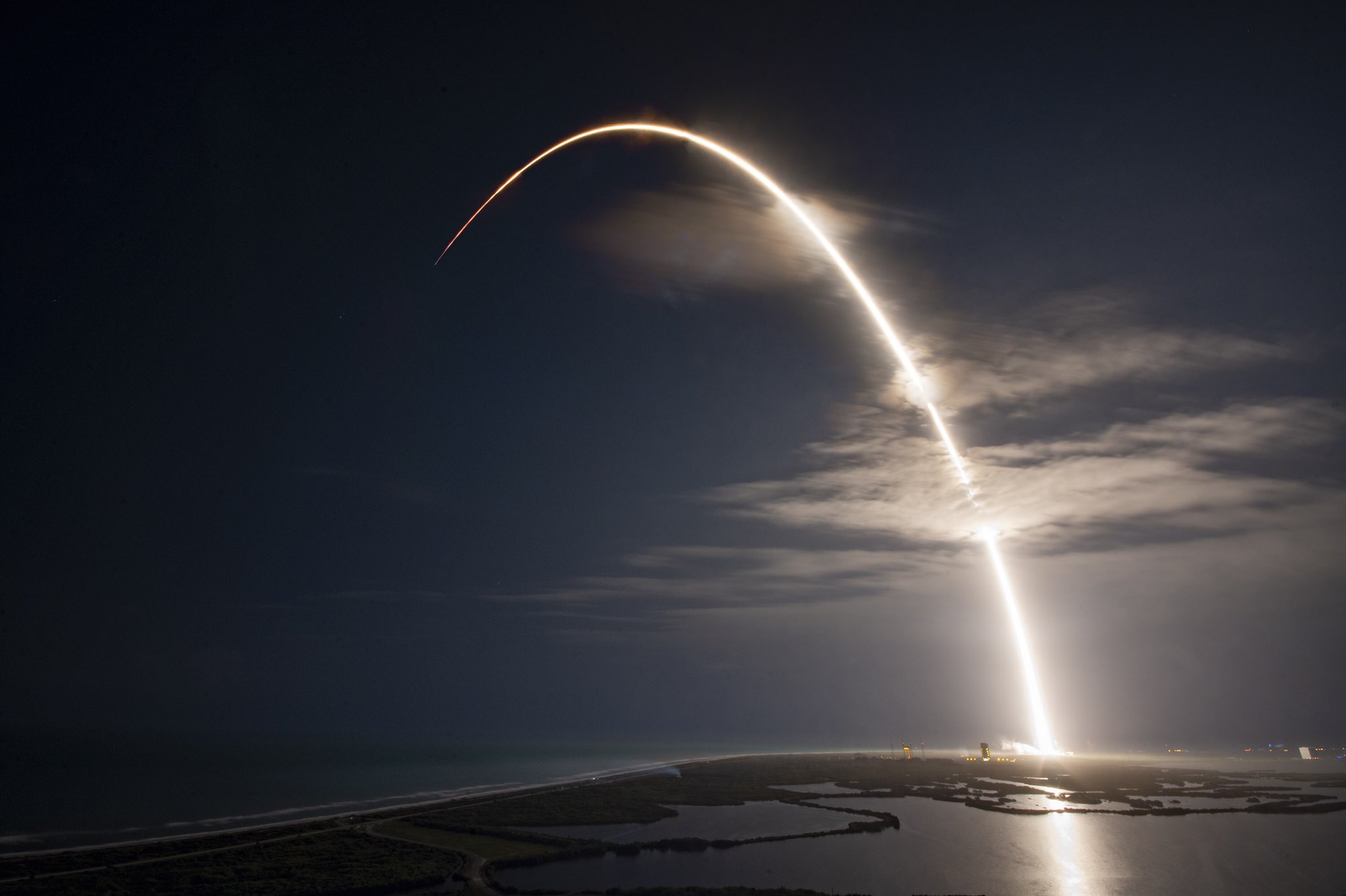
A hefty communications satellite built by Boeing and launched by SpaceX Monday night from Cape Canaveral is on the way to a lofty perch more than 22,000 miles (nearly 36,000 kilometers) over the Pacific Ocean, where a startup named Kacific will use it to link remote populations seeking connectivity for health clinics, schools and other basic services.
The powerful telecom craft lifted off from Florida’s Space Coast atop a SpaceX Falcon 9 rocket at 7:10 p.m. EST Monday (0010 GMT Tuesday) after a smooth countdown.
The Falcon 9 rocket, propelled by a first stage booster flown twice before, streaked through cloud layers over Cape Canaveral as it turned eastward over the Atlantic Ocean and exceeded the speed of sound in the first minute of the flight.
Following a standard launch profile, the first stage shut down and separated two-and-a-half minutes into the mission and descended back through the atmosphere, using rocket thrust to brake for touchdown on SpaceX’s drone ship parked east of Cape Canaveral in the Atlantic Ocean. Once back at the Florida launch base, the booster — designed for up to 10 flights — could launch again.
The Falcon 9’s payload shroud also jettisoned right on time after the rocket soared above the dense, lower layers of the atmosphere. Two recovery ships deployed by SpaceX were on station in the Atlantic to try to retrieve the two halves of the fairing as they descended under parachutes, but SpaceX said the vessels narrowly missed catching the two pieces of the nose cone with their giant nets.
Instead, SpaceX said the recovery team will try to recover the fairing halves from the sea for potential refurbishment and reuse on a future launch.
The second stage, meanwhile, ignited its vacuum-rated engine for two firings to inject the mission’s satellite payload — named JCSAT 18/Kacific 1 — into an elliptical transfer orbit stretching more than 12,600 miles (20,300 kilometers) above Earth, on the way to a final operating position in geostationary orbit over the equator.
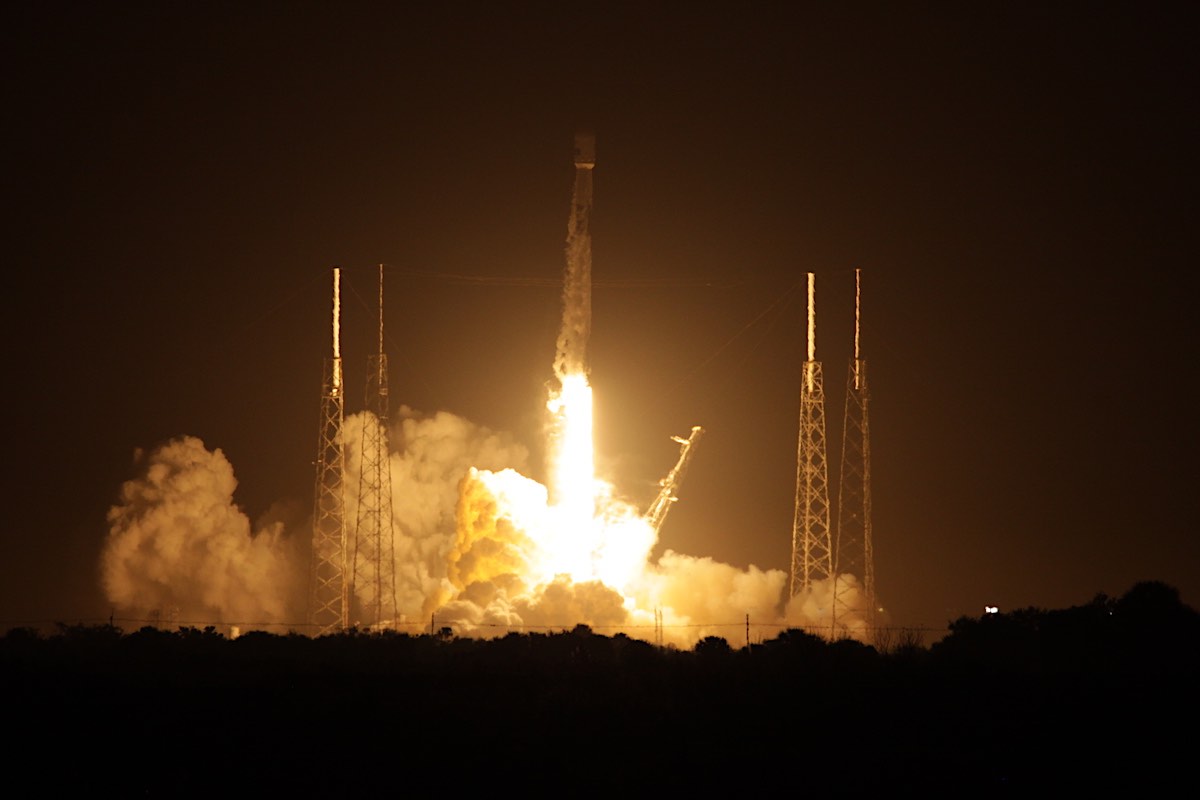
The Falcon 9 released its satellite passenger 33 minutes after liftoff, and a live camera view from the second stage of the rocket showed the JCSAT 18/Kacific 1 spacecraft flying away from the launch vehicle, backdropped by the curvature of the Earth.
Boeing officials confirmed the 15,335-pound (6,956-kilogram) radioed its status to ground teams after arriving in orbit Monday night.
The new spacecraft is a shared asset between Kacific and Sky Perfect JSAT Corp., an established satellite operator based in Tokyo. Kacific will take the satellite’s Ka-band capacity, and Sky Perfect JSAT controls the craft’s Ku-band payload.
Kacific, headquartered in Singapore, was founded in 2013 by Christian Patouraux, then a 20-year satellite industry veteran with experience in satellite engineering and business strategy development.
“Our vision is very much to bridge the digital divide, to drive economic development,” Patouraux said in a pre-launch media briefing Monday. “The World Bank has shown evidence that if you provide connectivity you have a direct impact, a signifiant impact on economic growth. We will do that throughout the Asia-Pacific.”
“It will be really a game-changer deep inside society,” Patouraux said of Kacific 1. “And it will provide a public service that will also connect all kinds of government services, not only schools and hospitals but you can also think of connecting post offices delivering ID cards and passports — locally inside villages — as well as police stations and fire stations.””
Kacific has leased capacity on third-party satellites to begin realizing its vision of beaming broadband connectivity to millions of underserved people across the Asia-Pacific region. Now, after some financial maneuvering, loans and equity fundraising, Kacific has its own satellite infrastructure in orbit.
“It’s been six-and-a-half years of hard work to get here,'” Patouraux. ‘The most difficult part was really to get financing in a project like this.”
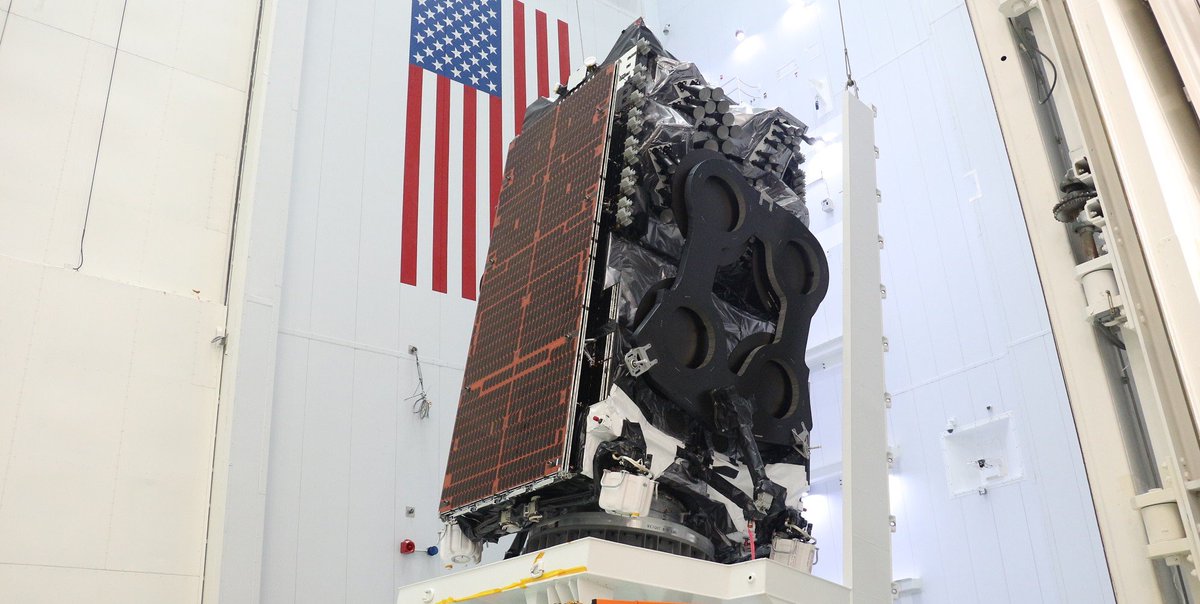
According to Patouraux, Kacific invested more than $200 million in developing its part of the JCSAT 18/Kacific 1 mission, including Kacific’s share of the launch costs, satellite production costs, and ground systems.
“It was a lot of grit, a bit of luck here and there,” he said.
After he founded Kacific, Patouraux initially raised funding from friends and family, then began making connections with prospective users of the company’s satellite broadband service. Kacific then issued a tender to build its first satellite, and selected Boeing for the job in partnership with Sky Perfect JSAT.
Kacific ran into headwinds securing the funding to pay Boeing for the new spacecraft due to a lapse in financing ability of the Export-Import Bank of the United States. In the end, Patouraux said the company secured interim loans to pay Boeing for the satellite, and Kacific refinanced the credit line earlier this month with $160 million in longer-term loans from financial institutions in Asia and Europe.
“It was really, really white-knuckle until the end, but we managed to close that,” Patouraux said Monday. “We were really incentivized to close this before launching.”
Now that the spacecraft is in orbit, Boeing engineers will oversee a series of maneuvers using JCSAT 18/Kacific 1’s on-board main engine to circularize its orbit at an altitude of more than 22,000 miles. The engine burns will also move the satellite’s orbit over the equator, where its orbital velocity will match the rate of Earth’s rotation.
The geostationary orbit will allow the satellite to remain over the same geographic region 24 hours a day.
During its planned 15-year mission, JCSAT 18/Kacific 1 will be parked at 150 degrees east longitude, giving the satellite an expansive coverage zone stretching across the Asia-Pacific.
Patouraux said region covered by Kacific’s Ka-band payload is home to some 600 million people.
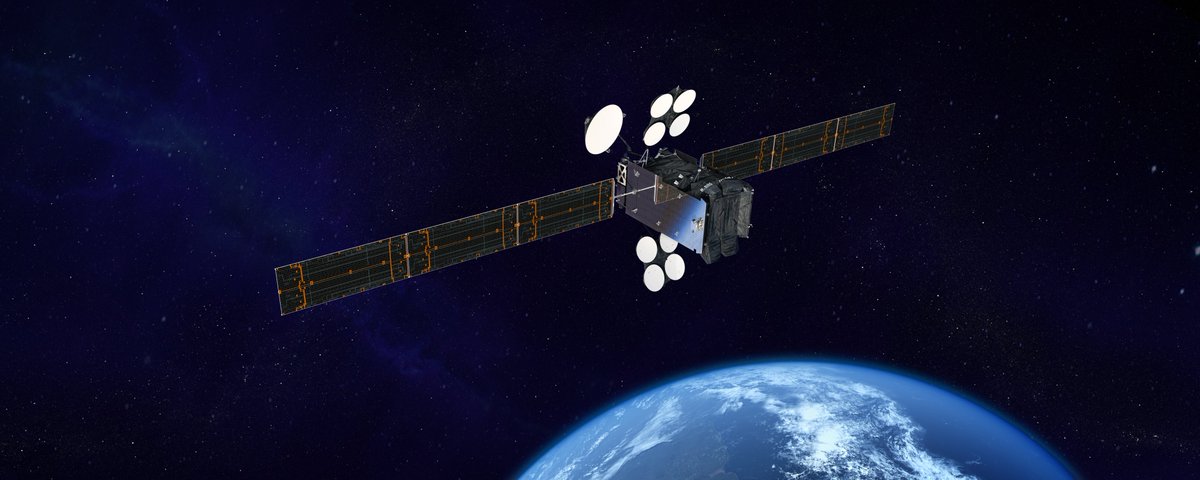
“Connecting communities gives them access to emergency healthcare, gives them access to evacuation,” said Patouraux. “They’re living in very precarious areas of the world that are prone to hurricanes, to earthquakes, landslides, tsunamis, volcanic eruptions.
“This is what Kacific is designed for specifically,” he said. “It’s a high-throughput satellite. It’s composed of 56 high-power beams that create an equivalent of a cellular network from space using frequencies and spectrum again and again from spot-to-spot across those 56 spot beams. It’s transmitting over high-power Ka-band, hence the name Kacific, Ka-band for the Pacific … And it has gateways to connect the satellite to high-speed backbone Internet in Australia, in the Philippines and in Indonesia.”
Kacific says its Ka-band payload will cover a swath from Nepal in the west to French Polynesia in the east, and from the Philippines in the north to New Zealand in the south. The coverage zone includes 25 countries.
Users with good ground antennas will be able to achieve download speeds of up to 50 to 100 megabits per second through Kacific’s network, Patouraux said.
While Kacific uses the new satellite’s Ka-band payload, Sky Perfect JSAT will simultaneously bring online the spacecraft’s Ku-band systems to provide mobile and broadband communication services over Japan and the broader Asia-Pacific region, with a coverage range extending from Indonesia and Southeast Asia to coastal China and Eastern Russia.
Email the author.
Follow Stephen Clark on Twitter: @StephenClark1.

